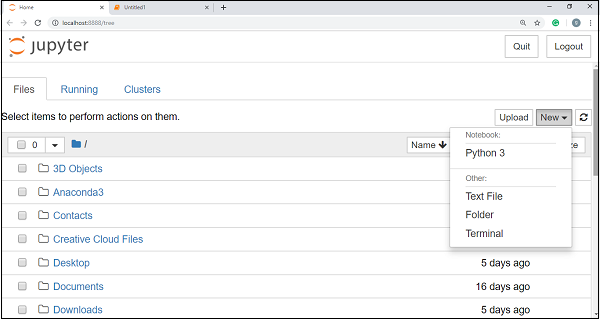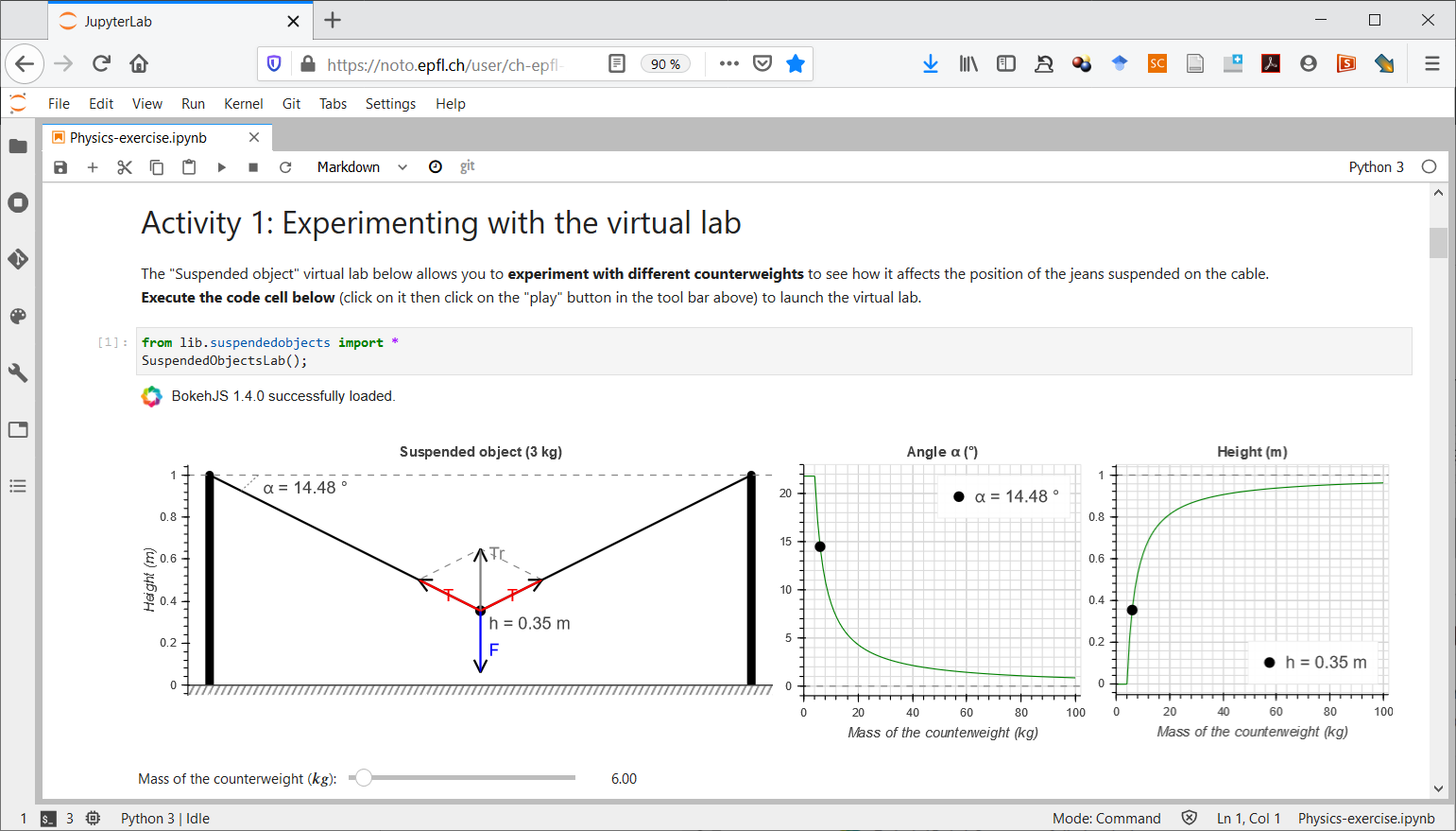

- PYTHON JUPYTER NOTEBOOK FOURIER TRANSFORM INSTALL
- PYTHON JUPYTER NOTEBOOK FOURIER TRANSFORM UPGRADE
- PYTHON JUPYTER NOTEBOOK FOURIER TRANSFORM CODE
This is most likely due to the FFTW3 algorithm responding to the discontinuities of the input data. There also appears to be some secondary peaks that rapidly roll off on both sides of the main peak. Since other raw data inputs into the Fortran program produced results as expected, the skew may be related to the way the data were generated in Python+Numpy or the way it was saved into a text file. It appears to show a peak of around 8 units, rather than purely 10 units. There appears to be a slight decrease in the peak of the magnitude of the DFFT plot. Load "sine_wv_50Hz_DFFT_gnuplot_macro.txt" at the gnuplot command prompt Run by typing gnuplot sine_wv_50Hz_DFFT_gnuplot_macro.txt or start GNUPlot and enter The GNUPlot script file may be downloaded by clicking here. The magnitude output file is plotted with GNUPlot. Plots of the magnitude output file using GNUPlot The program output is verbose (for debug) purposes and the screen output is shown below: The Output Files From the Fortran 2003 DFFT ProgramĪfter the Fortran 2003 DFFT program has been run correctly, magnitude and phase files should The line count can be obtained by typing: wc -l outfile.dat Is the number of periods of data in the input data file. Where outfile.dat is the output of the Python script, DFFT_mag_file.dat is the DFFT magnitude file,ĭFFT_phase_file.dat is the DFFT phase file,sample_rate is the rate of sampling of the input data file, and num_periods To recover the function from those components. Fourier analysis is fundamentally a method: To express a function as a sum of periodic components. a.out outfile.dat DFFT_mag_file.dat DFFT_phase_file.dat sample_rate num_periods The Discrete Fourier Transform (DFT) is used to determine the frequency content of signals and the Fast Fourier Transform (FFT) is an efficient method for calculating the DFT. The resulting filesĬompile by typing: gfortran -o a.out data_file_FFTW_ver6.F03 -lfftw3
PYTHON JUPYTER NOTEBOOK FOURIER TRANSFORM CODE
The Fortran 2003 code is compiled and run with the raw data text file as input. Running the Fortran 2003 DFFT Program and Obtaining Output Files The algorithm is used within a Fortran 2003 program.Ĭlick this link to see the Fortran 2003 DFFT code. Now that the Python+Numpy on Jupyter Notebook script has output time domain data elements into a file, theseĭata elements can now be fed into the FFTW3 DFFT algorithm. Obtaining Discretized Fast Fourier Transform of Raw Data File Image of 50Hz Sine Wave Generated Using Python+Numpy on Jupyter Notebook and Plotted with GNUPlotĭownload the image by clicking the link below: We then run the code and obtain a time domain plot and a frequency domain plot. Python script file to generate 50Hz sine wave


Python code to generate a 50Hz sine wave sampled at 44100Hz.ĭownload the code by clicking the link below: The time domain data is then outputted to a file and used as an input for the DFFT Fortran program to computed the DFFT and plot its output with GNUPlot.įirst, we start with a Python script written in Jupyter Notebook to generate a 50Hz sine wave, sampled at 44100Hz, for 10 periods, and save these raw data points to a file. We then plot the time domain graph of the sine wave, and then compute the Discretized Fast Fourier Transform using the Python libraries. We use Python together Numpy arrays and Matplotlib within a Jupyter Notebook to create a sine wave at 50Hz for 10 periods.
PYTHON JUPYTER NOTEBOOK FOURIER TRANSFORM INSTALL
You can donwload them using pip pip install numpy MatplotLib
PYTHON JUPYTER NOTEBOOK FOURIER TRANSFORM UPGRADE
To upgrade Python pip install python - upgradeĪdditional Packages that are required are: Numpy and MatplotLib\ To upgrade it python -m pip install - upgrade pip setuptools wheel To install pip run in the command Line python -m ensurepip - default-pip If you are using a lower version of Python you can upgrade using the pip package, ensuring you have the latest version of pip. If you don't have Python installed you can find it here. Here is an image of the man who came up with this idea. In this sort repository I will be implementing a general Fourier Transform algorithm capable of decomposing a function f(x) = sin(2apix) + sin(2bpix). The Fourier transform (FT) decomposes a function of time (a signal) into the frequencies that make it up, in a way similar to how a musical chord can be expressed as the frequencies (or pitches) of its constituent notes.


 0 kommentar(er)
0 kommentar(er)
